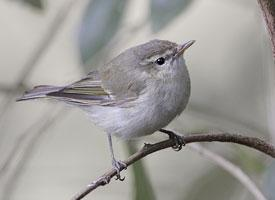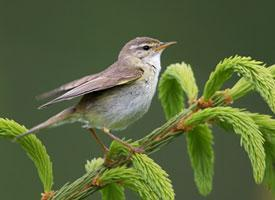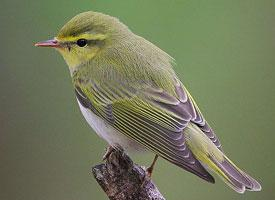
Description de l'animal
The Greenish Warbler (Phylloscopus trochiloides) is a fascinating and adaptable species of leaf warbler that is widespread across large parts of Asia, with its range stretching from the western parts of Russia through Siberia to China, and southwards to the Himalayas. This small, insectivorous bird is a marvel of evolution, showcasing significant variations across its range, which has been a subject of interest among evolutionary biologists, including a famous study by David Lack.Adult Greenish Warblers are diminutive birds, typically measuring between 9 to 11 centimeters in length and weighing around 6 to 8 grams. Their appearance is characterized by their predominantly greenish upperparts, which blend seamlessly with the leafy environments they inhabit. The underparts are a cleaner whitish color, often with a pale yellow wash that becomes more pronounced in some subspecies. One of their distinguishing features is a single or double wing bar, which varies among the different populations. Their supercilium (eyebrow stripe) is pale and contrasts with a darker line through the eye, giving them a distinctive facial pattern that aids in identification.
The Greenish Warbler's song is a high-pitched and trilling melody, which, along with its calls, is an important aspect of its behavior, especially during the breeding season. These vocalizations are crucial for territory defense and attracting mates. The variability in their song across different populations has been a key aspect of studies on speciation.
Breeding mainly in mixed or coniferous forests, these warblers exhibit a preference for woodland habitats with dense foliage, which provides ample feeding opportunities and nesting sites. Their diet primarily consists of small insects and other arthropods, which they skillfully pluck from leaves and branches, often while hovering.
The nesting habits of the Greenish Warbler are quite typical of the Phylloscopus genus. They construct their nests on the ground, hidden among vegetation, where the female lays between 4 to 7 eggs. The eggs are incubated mainly by the female, with both parents participating in feeding the chicks once they hatch.
One of the most fascinating aspects of the Greenish Warbler is its role as a classic example of a "ring species" in evolutionary biology. The species forms a ring around the Tibetan Plateau, with populations diverging genetically in a gradual manner along the ring. However, at the point where the populations meet again in the north, they are sufficiently different to be considered separate species, unable to interbreed successfully. This phenomenon provides compelling evidence for the process of speciation, where new species arise from a gradual divergence of populations.
The Greenish Warbler is considered to be of Least Concern by the International Union for Conservation of Nature (IUCN), thanks to its wide range and large population. However, like many other species, it faces threats from habitat destruction and climate change, which could impact its populations in the future. Conservation efforts to preserve its habitats are essential to ensure that this fascinating bird continues to thrive across its vast range.
Animaux similaires
Nouvelles photos d'animaux
Top 10 des animaux
- Dolphin gull (Leucophaeus scoresbii)
- Diana monkey (Cercopithecus diana)
- Moustached guenon (Cercopithecus cephus)
- Galápagos tortoise (Geochelone nigra complex)
- Japanese macaque (Macaca fuscata)
- Stone loach (Barbatula barbatula)
- Russian tortoise (Testudo horsfieldii)
- Greek tortoise (Testudo graeca)
- Common flying dragon (Draco volans)
- Vendace (Coregonus albula)


